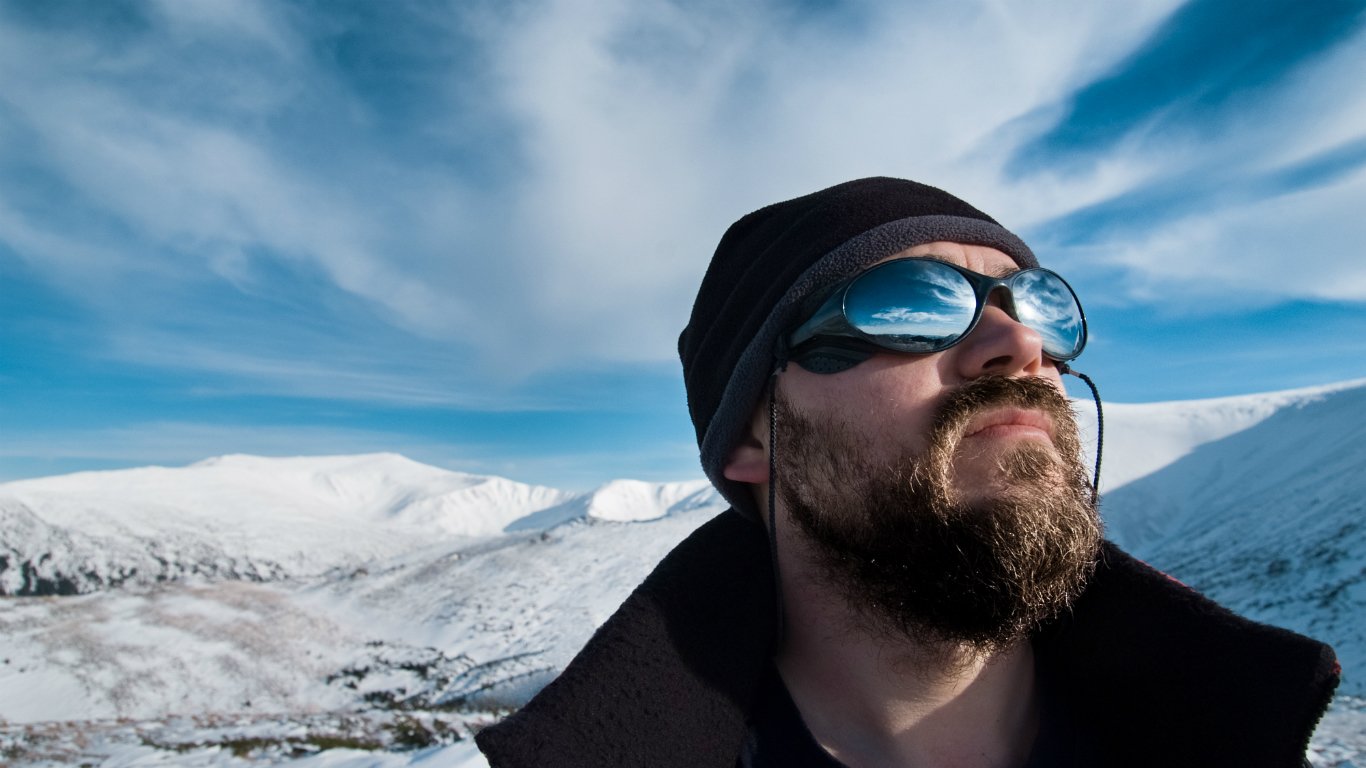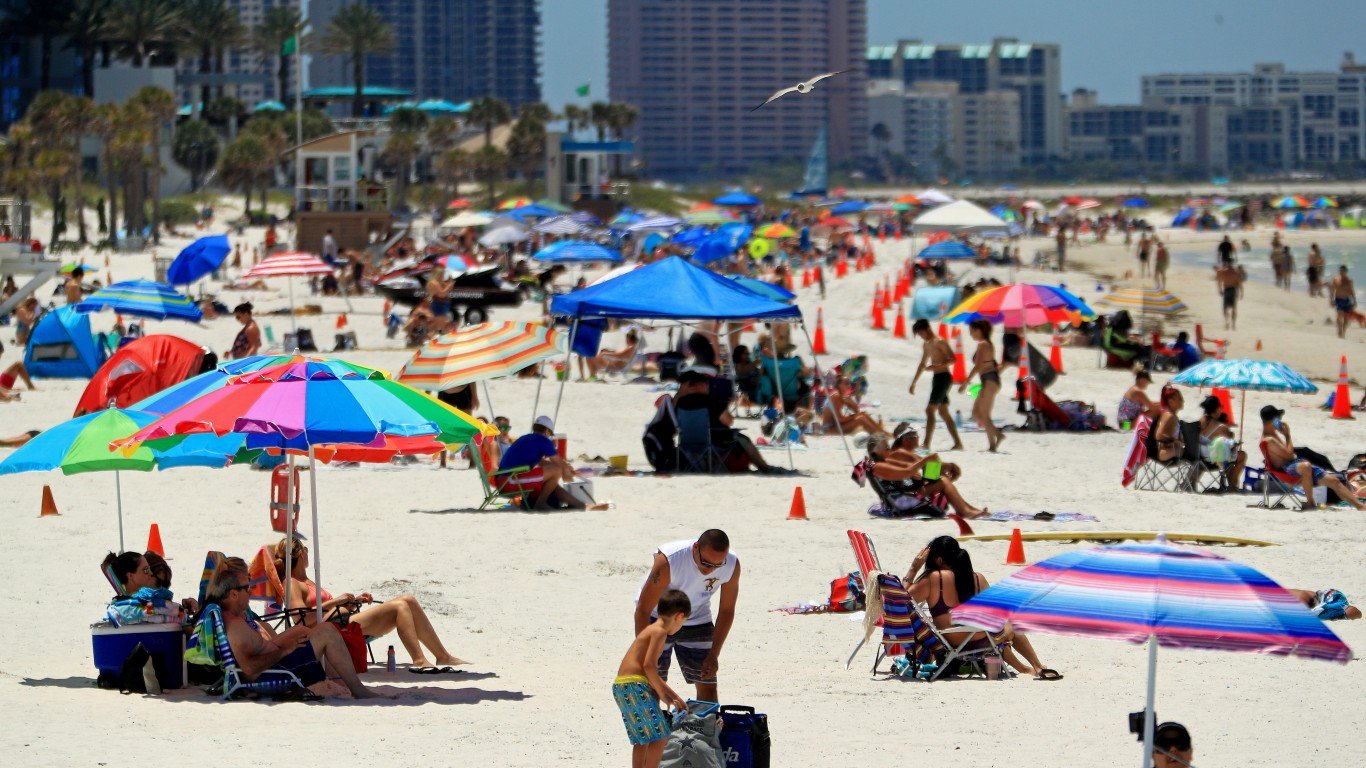

As the rate of new cases of COVID-19 continues to drop, the effort to get back to “normal” has become a race between vaccination on one hand and what many experts believe is a careless effort to reopen the economy on the other. The decision by Texas Gov. Gregory Abbott to drop the mask mandate in the nation’s second largest state caused particular consternation among those who want to allow vaccination rates to rise before unmasked public gatherings begin. (This is when Americans can stop wearing face masks according to Dr. Fauci.)
Confirmed cases in the United States number 29,293,090 to date. The rate at which they rise on a daily basis has dropped by two-thirds in the past two months. However, the figure remains about 25% of all those in the world. Fatal cases have reached 530,614, which is a fifth of the global total.
The national vaccination rate has risen steadily for the past three weeks and about 18% of the population has now received at least one dose, while just under 10% have received two shots. A total of 123,232,775 doses have been delivered to date and 93,692,598 shots have been given. (These are the states where the most people are refusing the COVID-19 vaccine.)
The course of the disease is no longer falling in all large states, however. Florida is a particularly worrisome case, and events there suddenly have become a warning to the rest of the country.
Click here to see the state that shows threat to COVID-19 recovery
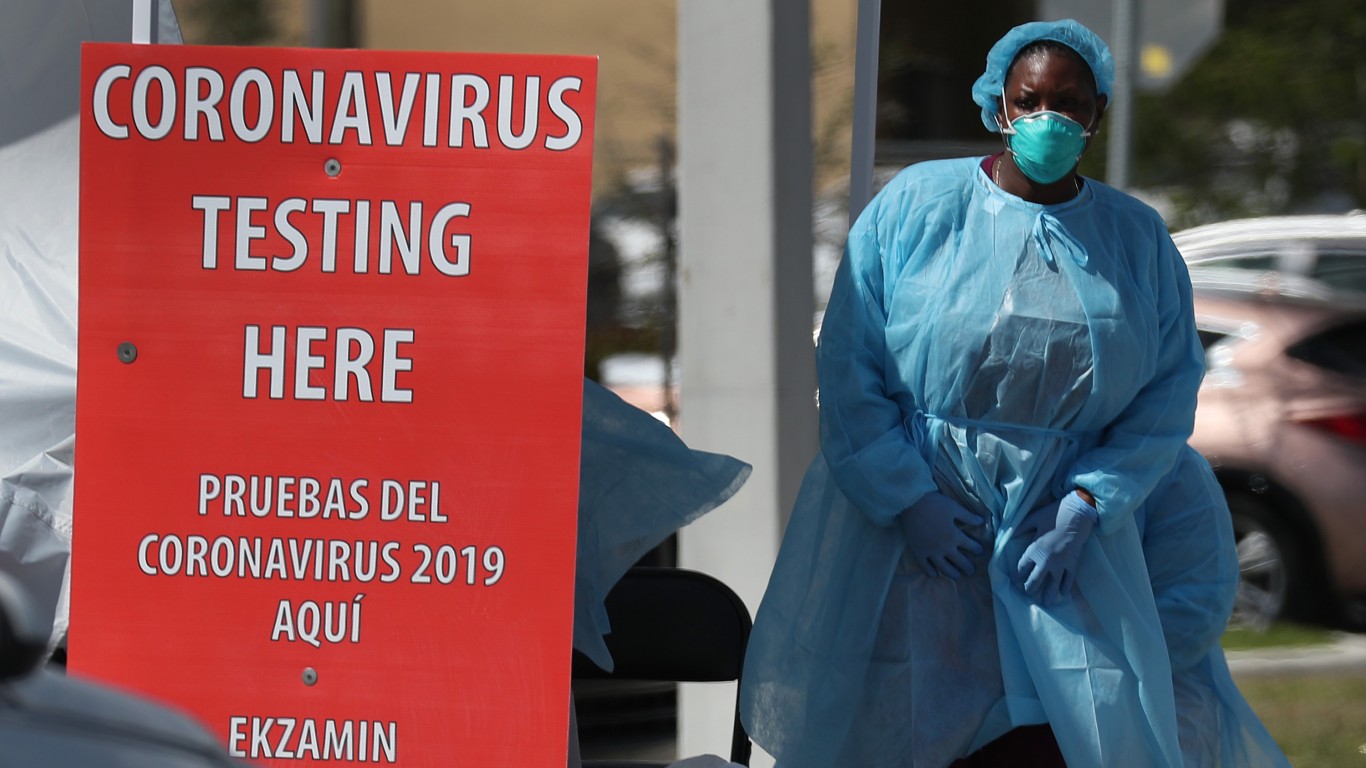
Florida may be the tip of the iceberg
According to a new analysis of the spread of the novel coronavirus from Bloomberg, “A highly infectious Covid-19 variant is circulating widely in Florida, prompting concern that a resurgence of the virus is possible in the state and beyond, even as cases and hospitalizations drop dramatically.” The variant in Florida is one of several that have been discovered in the past several months.
[in-text-ad]
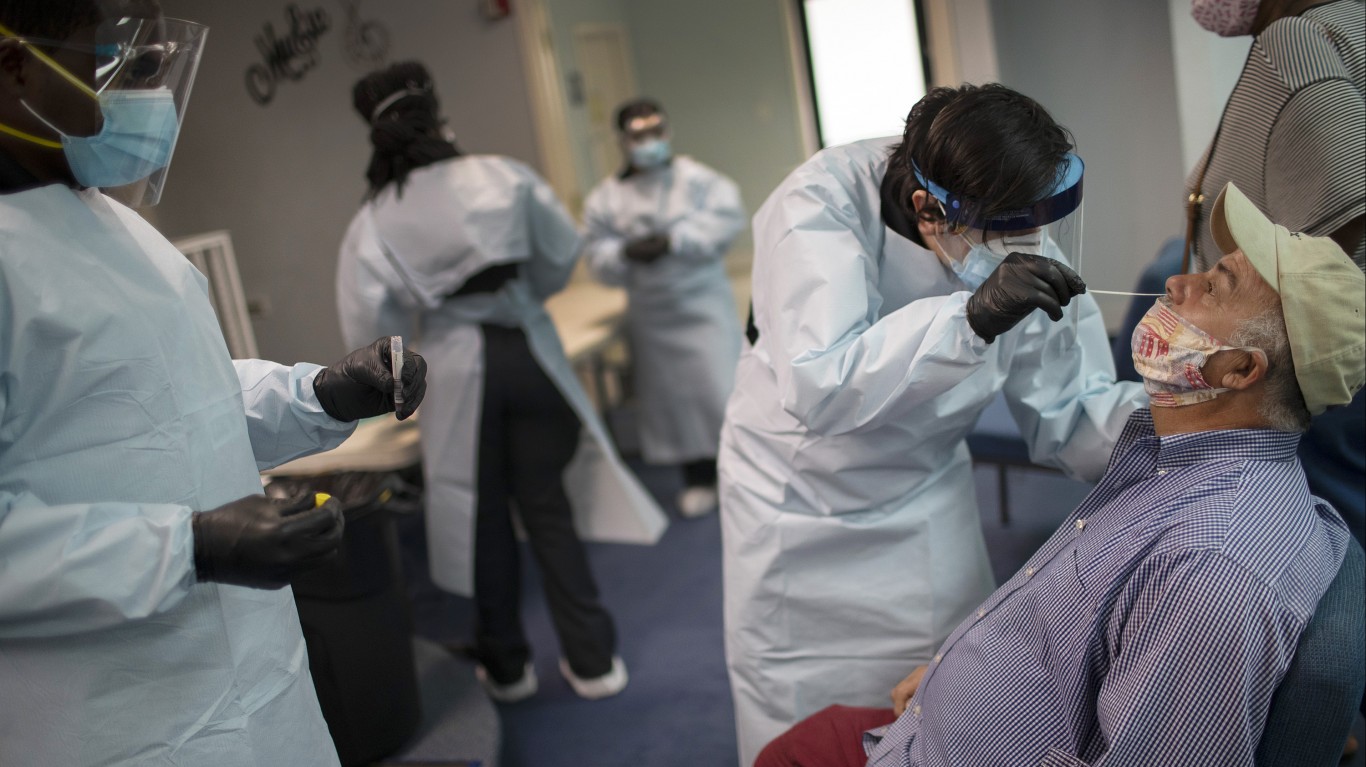
The biggest problem is the B.1.1.7 variant
Bloomberg also points out that the most worrisome variant, known as B.1.1.7, accounts for about 30% of samples taken in Florida recently. Moreover, the B.1.1.7 variant is spreading quickly elsewhere as well. The New York Times reports that the “variant first reported in the United Kingdom has likely grown to account for more than 20 percent of new U.S. cases as of this week, according to an analysis of data from Helix, a lab testing company.”
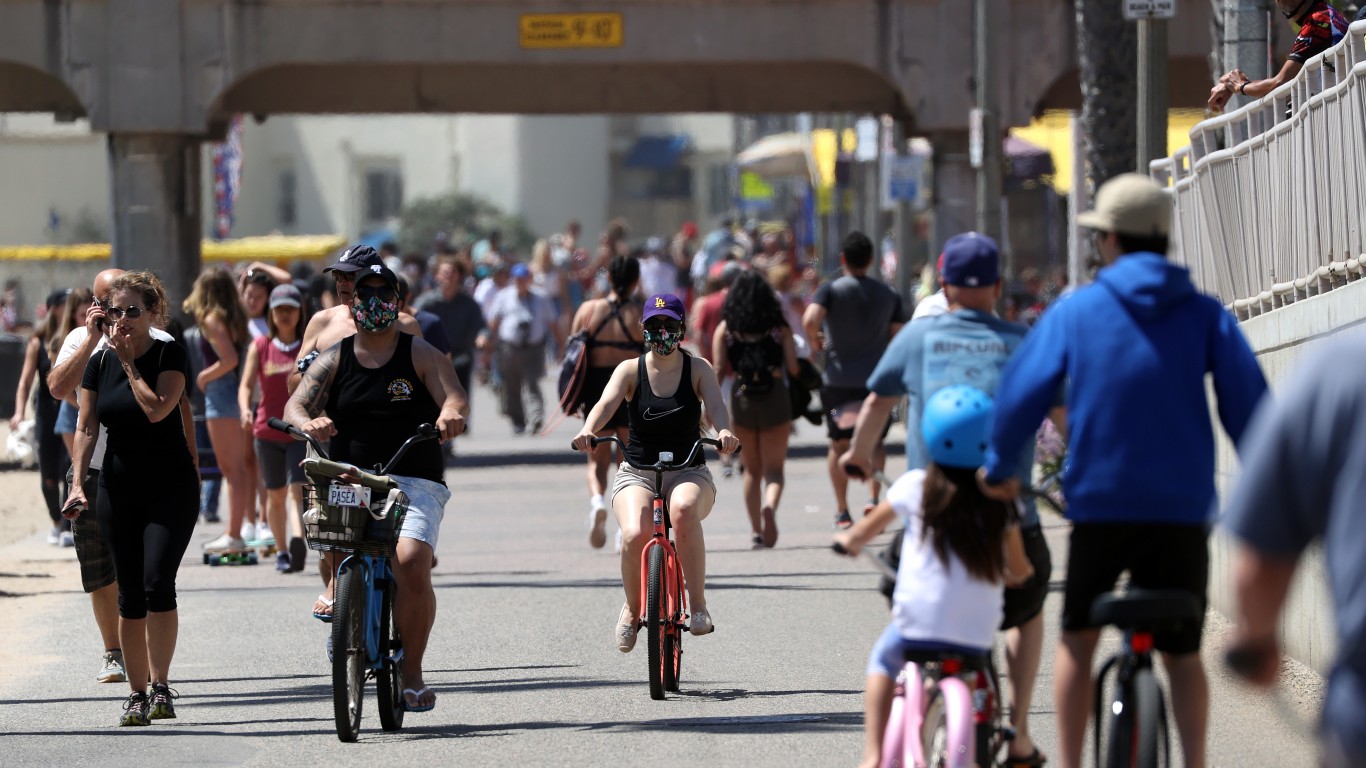
The B.1.1.7 variant isn’t the only problem, though
In addition to the B.1.1.7 variant, the CDC tracks two others. The B.1.351 variant has been diagnosed in 20 states, and the P.1 variant has been spotted in nine. Florida is one of the affected states in both instances, with the first P.1 case showing up on Feb. 18 and the B 1.351 virus initially reported on Feb. 18. (At least one additional variant has been discovered in California. According to the Mercury News, “There is also another variant of concern in California, what appears to be a homegrown variant known as B.1.427 and B.1.429.”)
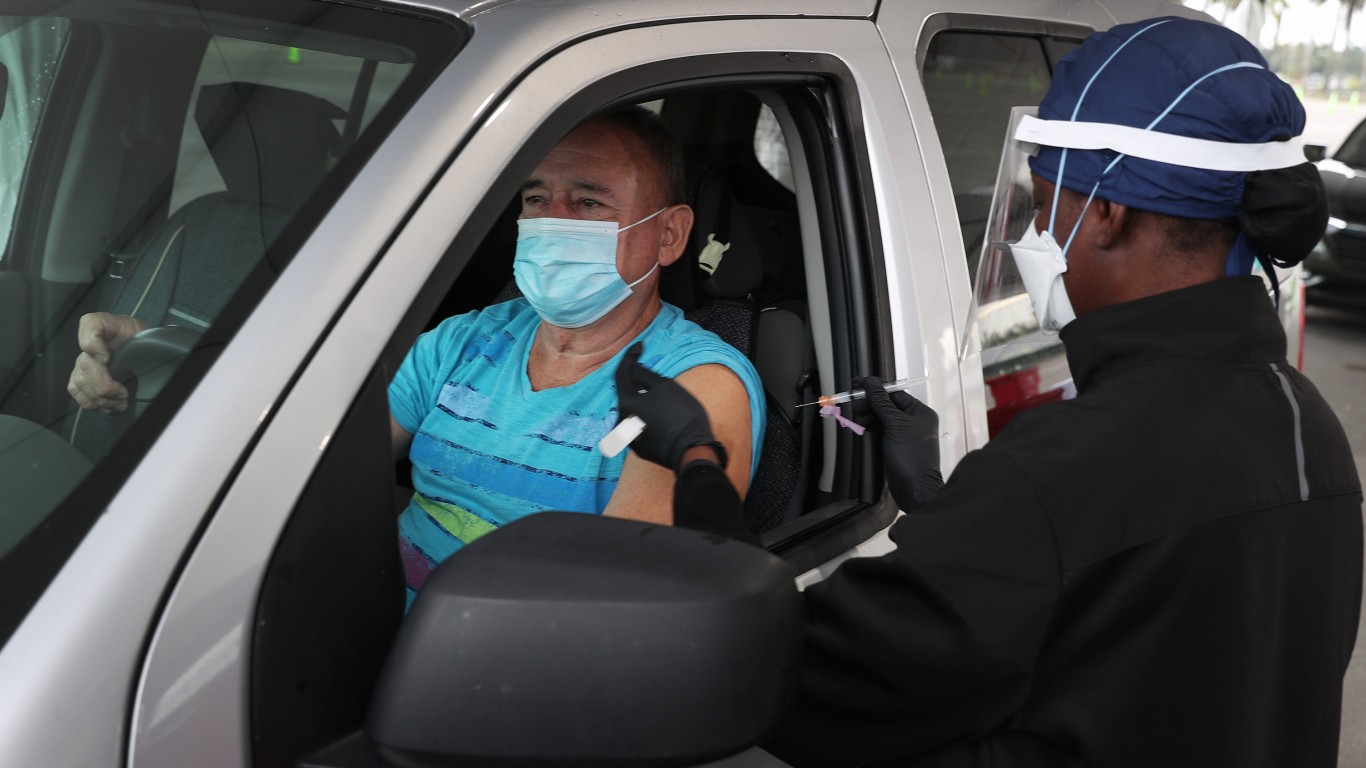
Florida’s vaccination rate is lagging
The pace of vaccinations in Florida is slightly below average, another challenge to stopping the spread of COVID-19 there. A total of 7,771,315 doses have been delivered to the state, out of which 5,904,827 shots have been administered. According to the CDC, that translates to 17% of people in Florida having received at least one dose of vaccine, and less than 10% having gotten two shots.
[in-text-ad-2]
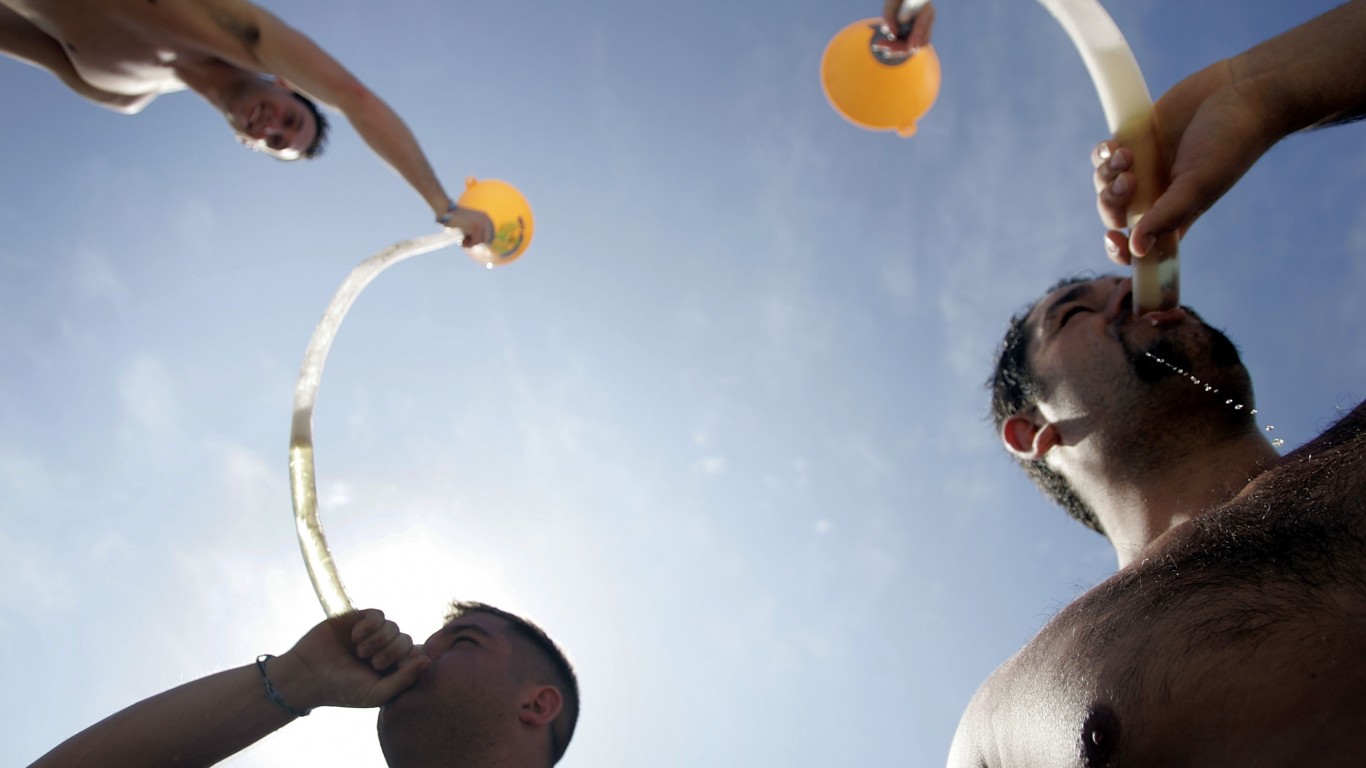
Florida also has a superspreader problem
The rush by some states to reopen poses the threat of rapid disease spread. The likelihood of events with large numbers of people without masks almost certainly rises. Florida’s warm weather is another reason it is more vulnerable than many other locations. One leading authority on the pandemic pointed to spring break as a danger. With the exception of last year, spring break traditionally brings tens of thousands of college students to the southeast Florida coast. It is the “perfect storm,” said Dr. Peter Hotez, dean of the National School of Tropical Medicine at Baylor College of Medicine told CNN.
Sponsored: Find a Qualified Financial Advisor
Finding a qualified financial advisor doesn’t have to be hard. SmartAsset’s free tool matches you with up to 3 fiduciary financial advisors in your area in 5 minutes. Each advisor has been vetted by SmartAsset and is held to a fiduciary standard to act in your best interests. If you’re ready to be matched with local advisors that can help you achieve your financial goals, get started now.
Thank you for reading! Have some feedback for us?
Contact the 24/7 Wall St. editorial team.
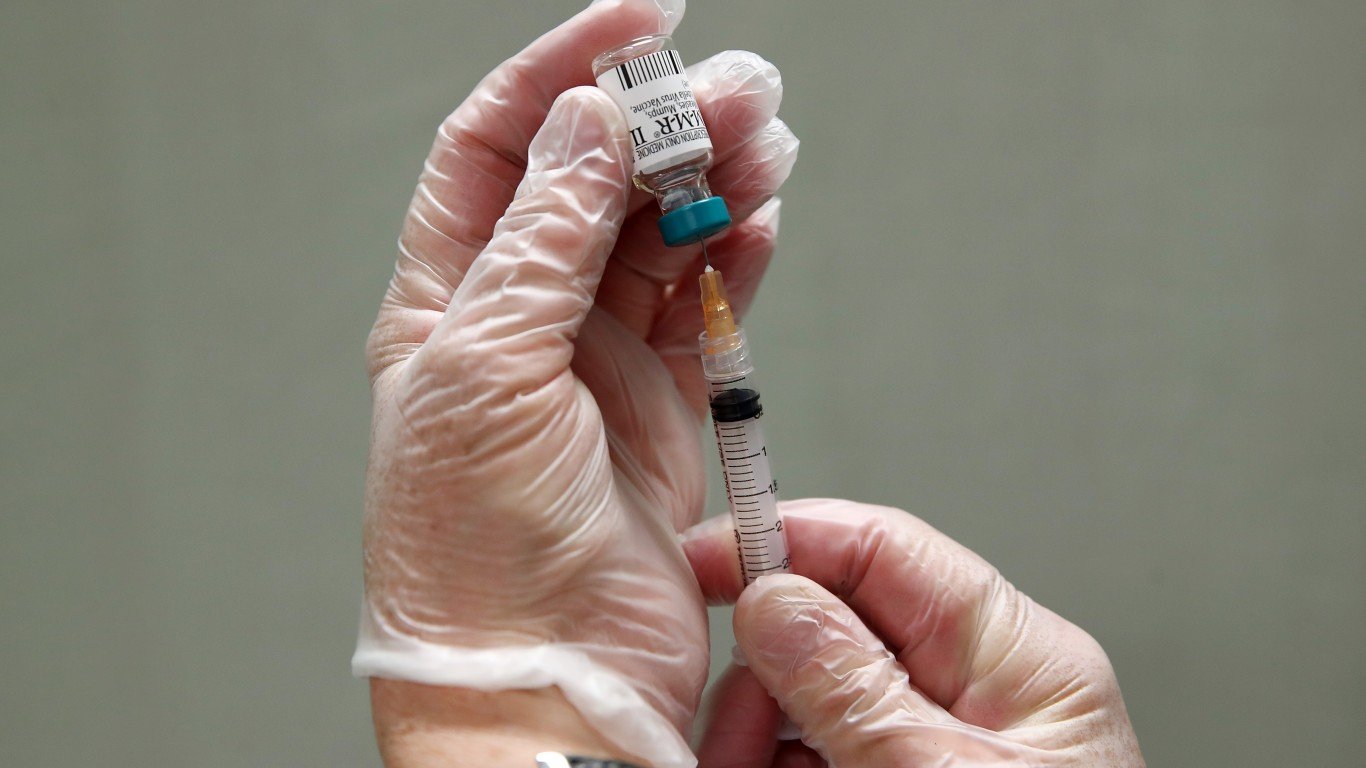 24/7 Wall St.
24/7 Wall St.
